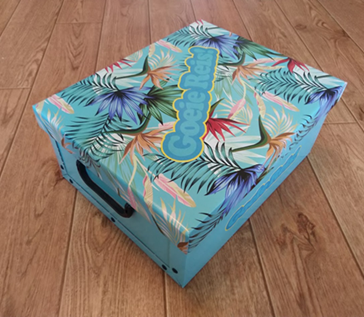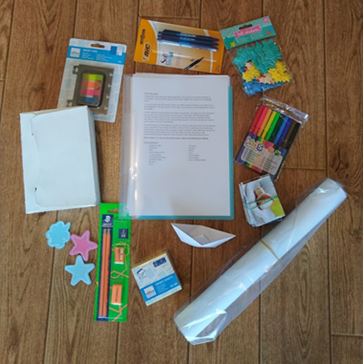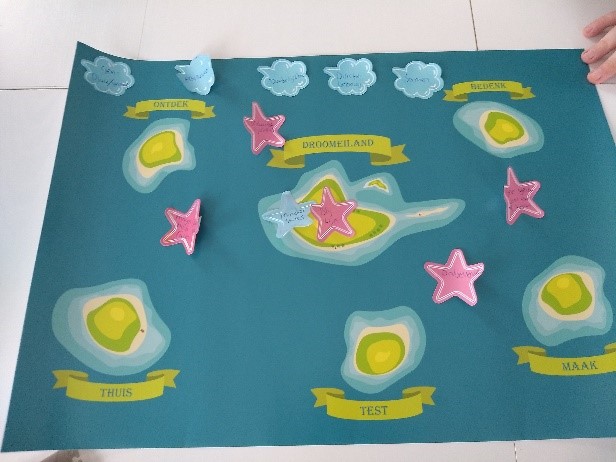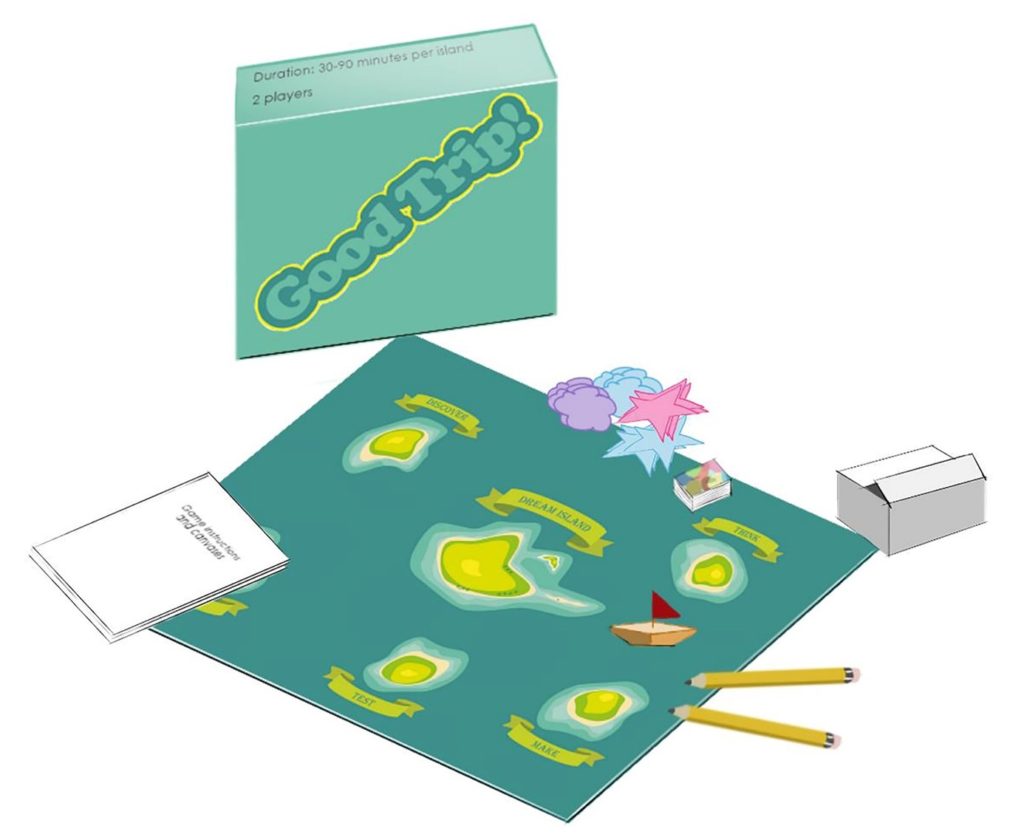Design case: Jasmijn Sagel
On January 19th, 2021, Jamsijn Sagel received her BSc Industrial Design Engineering for her Design Your Life-design case. Her design case was a pilot for the Design Your Life project. For her bachelor assignment, Jasmijn created ‘Good Trip!’: a co-design toolkit for young autistic adults (YAA) and their carers to promote independence. Her toolkit is characterised by a game-like setup and the metaphor of sailing to different islands.
Jasmijn: ‘In April of 2020 two pilots of the DYL research got started. The insights that resulted from this are a starting point for this bachelor thesis, for which the focus is giving equally important roles to the YAA and the carer, and promoting creativity, which consists out of originality and effectiveness.

The toolkit’s exterior.
Image: Jasmijn Sagel

The toolkit came with a variety of materials to support the participants’ design process.
Image: Jasmijn Sagel
The toolkit concept that is tested during this thesis is a board game called ‘Good Trip!’. The game makes use of the Design Thinking approach. ‘Good Trip!’ consists out of six islands, five of which belong to the design thinking phases understand, define, ideate, prototype, and test. The final island includes the goal of the YAA. During the case study, the game is played in six session of approximately an hour. After each session there is an evaluation. The participants of the case study are a 23-year-old male YAA who receives protected living from RIBW-AVV, one of the partners of this research, and his carer of the past three years. While iterating during the co-design sessions they found the goals ‘being happy’, ‘less stress’, and ‘a better sleeping schedule’. The product that they chose for this is setting up two alarm clocks on the YAA’s phone, one for going to bed and one for waking up. The chosen product does not work perfectly but there are already insights for the second iteration. During this case study, the participants have gone through the design cycle once under my supervision. After the case study, changes are made to the toolkit. After this thesis the participants continued with the next design cycle under the supervision of a successor.

The board with examples of additions.
Image: Jasmijn Sagel
A good point of this toolkit and method is that the YAA can speak for himself and decide what he wanted to work on and how. The YAA and carer enjoyed having equally important roles and it was motivating that the toolkit was a game. The method being a game was fun and motivating for the participants and the YAA had no troubling understanding this metaphor. It was also found that cards with an image, inspiration cards, which can be used during the brainstorming sessions, are a good way of promoting originality. A point of improvement is the transition from loose ideas to a concept, as the participants were the most stuck at this point. At this point the participants were stuck the most. At the moment it is not possible to take away the designer, as during this case study the designer was needed for the transition from loose ideas to a concept. The designer was also able to make additions for ideas that the participants were not familiar with yet and to find out why the YAA was not satisfied with something.
For the final design of the toolkit, a few changes were made to the toolkit concept. Users can now decide for themselves how much time they want to spend on the co-design sessions and users can add both their goals as well as their chosen technologies to Dream Island. On top of that the final toolkit design allows users to use the toolkit several times.’
